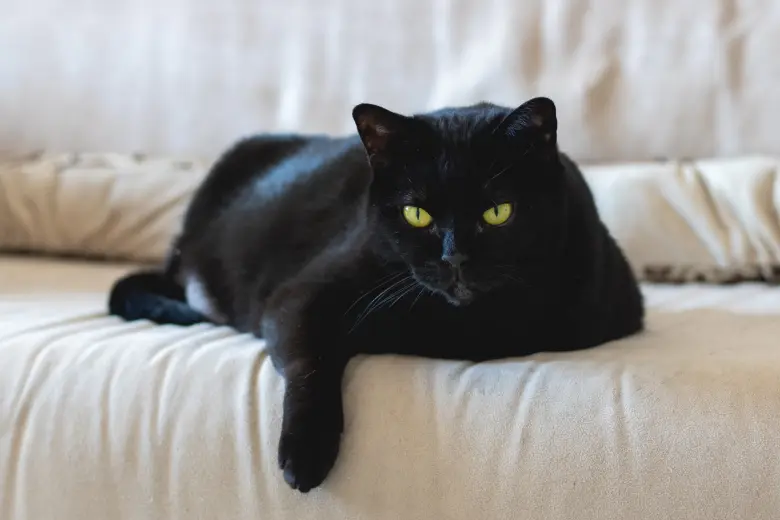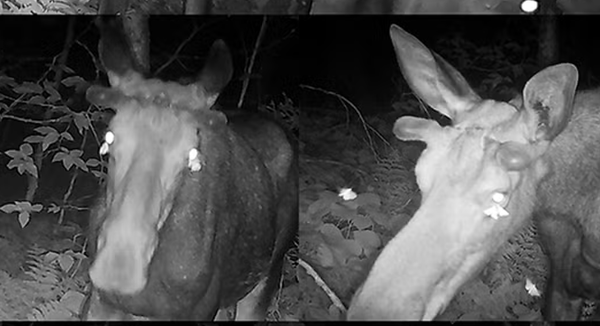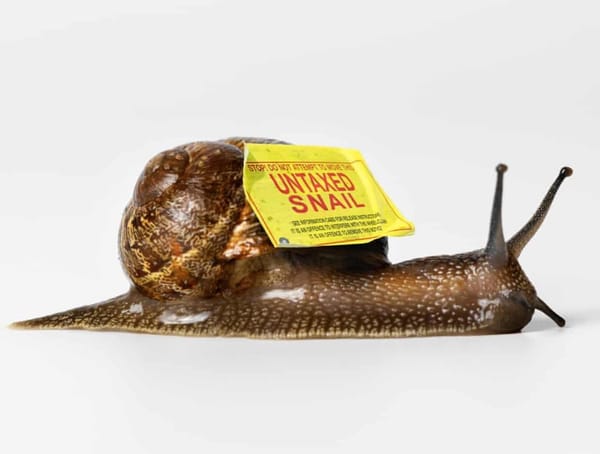How a homeless kitten named Tom became a multimillionaire

From Now I Know: "In 2007, Tommaso was a homeless kitten, living on the streets of Rome — your stereotypical alley cat. He quickly became the feline equivalent of a rags-to-riches story when a woman named Maria Assunta, then either 89 or 90 years old, adopted Tommaso as her own. Tommaso became one of Assunta’s few companions; her husband, a property magnate, predeceased her, and she didn’t have any children (and apparently, not a lot of friends). And when Assunta passed away in 2011, she left her entire fortune — $13 million — to Tommaso. Under Italian law Tommassino was not entitled to inherit the money directly, so the solution was to give control of the money to a nurse who had cared for Assunta. The nurse — identified in the press only as Stefania, to protect her from people who want the cat’s money — was named as the trustee of the millions for the benefit of the cat. Stefania was apparently unaware of her late employer’s wealth, but didn’t seem to mind that it went to the cat and not her."
Scientists have developed a tiny, injectable pacemaker that runs on light

From Scientific American: "Temporary pacemakers can be used as a stopgap measure to regulate the heartbeat after surgery and in emergency situations. Conventionally, temporary pacemakers comprise electrodes that are implanted in the heart muscle. These electrodes are connected to an external battery that delivers a pulse to control the heart’s rhythm and correct slow or irregular heartbeats. But the fact that they need to be surgically installed and removed also brings risk: moon walker Neil Armstrong famously developed fatal bleeding when surgeons removed his temporary pacemaker’s wires in 2012. Now researchers have developed a tiny temporary pacemaker that could eliminate some of that risk. Their device, just a few millimeters long, has no wires and needs minimally invasive placement. It can be injected into the body with a needle. And when its work is done, it simply dissolves.”
He became a billionaire by inventing cat litter

From Wikipedia: "Edward Lowe was an American businessman and entrepreneur, noted for the invention of cat litter. By the time of his death, his company was worth about five hundred million dollars or $1 billion today, adjusted for inflation. Before Lowe's invention, people kept their cats outside, using ashes, dirt or sand as cat litter when it was necessary to keep them inside. One day in January 1947, Mrs. Draper, Edward Lowe's neighbor in Cassopolis, Michigan, asked him for some sand to use as cat litter. Her sand pile was frozen so she had been using ashes but they tracked all over her house. Lowe worked for his father's company which sold bulk shipments of sand, sawdust and clay to heavy industries for use as absorbents. His father had recently received a sample shipment of a new clay product that he didn't want to switch to so it was just stored in a garage. Instead of sand, Lowe gave her some of that clay called Fuller's Earth, a set of clay minerals capable of absorbing their weight in water."
Hi everyone! Mathew Ingram here. I am able to continue writing this newsletter in part because of your financial help and support, which you can do either through my Patreon or by upgrading your subscription to a monthly contribution. I enjoy gathering all of these links and sharing them with you, but it does take time, and your support makes it possible for me to do that. I also write a weekly newsletter of technology analysis called The Torment Nexus.
This tropical tree not only survives but thrives after being struck by lightning

From Science.org: "Growing up to 55 meters tall in the tropical forests of Panama, the almendro tree is a natural lightning rod. And that appears to be a good thing: The millions of volts that course through this species during a strike electrocute parasitic vines and leap from branches, killing nearby trees that might compete for the almendro’s sunlight, researchers report. Since 2014, scientists have installed several monitoring systems in a patch of forest on Panama’s Barro Colorado Island. The systems — including cameras and electromagnetic sensors — can pinpoint the location of a lightning bolt to within fewer than 30 meters, making it easier to identify which trees are struck. Almendro trees seemed particularly resilient to lightning strikes. All nine that had been struck were practically unscathed, losing only small patches of leaves. In comparison, similarly tall trees of other species took nearly six times as much damage."
Internet company Cloudflare uses wave machines to generate randomness

From Cloudflare: "Over the years, Cloudflare has gained fame for many things, including our technical blog, but also as a tech company securing the Internet using lava lamps, a story that began as a research/science project almost 10 years ago. In March 2025, we added another layer to its legacy: a "wall of entropy" made of 50 wave machines in constant motion at our Lisbon office, the company's European HQ. The original inspiration came from wave motion machine desk toys, which were popular among some of our team members. However, this was easier said than done. It turns out that making a wave machine wall is a real challenge, given that these toys are not as popular as they were in the past, and aren’t being manufactured in the size we needed any more. We scoured eBay and other sources but couldn't find enough, and we also discovered that off-the-shelf models weren’t designed to run 24/7, which was a critical requirement."
Watch what happens when you turn this special cup and saucer
Watch what happens when you turn around this cup and saucer...☕️ pic.twitter.com/vXCaMJSThW
— Sarahh (@Sarahhuniverse) May 7, 2025
Acknowledgements: I find a lot of these links myself, but I also get some from other newsletters that I rely on as "serendipity engines," such as The Morning News from Rosecrans Baldwin and Andrew Womack, Jodi Ettenberg's Curious About Everything, Dan Lewis's Now I Know, Robert Cottrell and Caroline Crampton's The Browser, Clive Thompson's Linkfest, Noah Brier and Colin Nagy's Why Is This Interesting, Maria Popova's The Marginalian, Sheehan Quirke AKA The Cultural Tutor, the Smithsonian magazine, and JSTOR Daily. If you come across something interesting that you think should be included here, please feel free to email me at mathew @ mathewingram dot com



